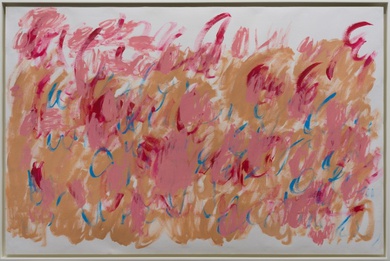Salome Tanuvasa

Bio.
In a brief reprieve from full-time work, keeping the children entertained and myriad other responsibilities, a brisk walk around the family home reveals art materials; paper, card, gift wrap and an A4 clear file. Knowing that every minute taken means another minute lost, marks are made over and over and over, then discarded, redrawn and repositioned until, before long, ten works are made and left to dry until the next reprieve.
Tanuvasa describes her drawings as being “as true as they can be”. In one sense this is emphasised by the challenge she sets herself; to use the materials and time allowed by her immediate environment, and to ask the question ‘what can one make artwork with?’ and, ultimately, ‘what can be art?’. In another sense, though, her instinctual drawing style is a form of truth-telling in itself. Tanuvasa’s marks are distillations of her thoughts – moments of time, moments of pause – and she seems to ask “What kind of marks can hold a viewer’s attention?”
Tanuvasa has developed her drawing practice since her MFA graduation from Elam in 2014, and since that time her marks have become stronger, more refined, and more considered. One can’t help but see them as the artist creating her own language – or code – of swirls and shapes. Bearing in mind the fact that certain motifs carry multiple meanings, Tanuvasa seems to consider the ways that meaning can be formed via a language that is entirely visual.
In the 10 years I have watched Tanuvasa’s broad practice – from wall drawings to video to photography to installation – the single thing that remains constant is the impossibility to pin it down. In part this is because Tanuvasa works almost exclusively within, and in response to, her (private) environment. Which is not to imply that her works are about interiors; in fact the opposite is true. Tanuvasa’s practice is set within the confines of a domestic space, but conceptually they look outwards; her home is her personal framework for looking. (Lana Lopesi, 2018)
Courtesy of Tim Melville Gallery
